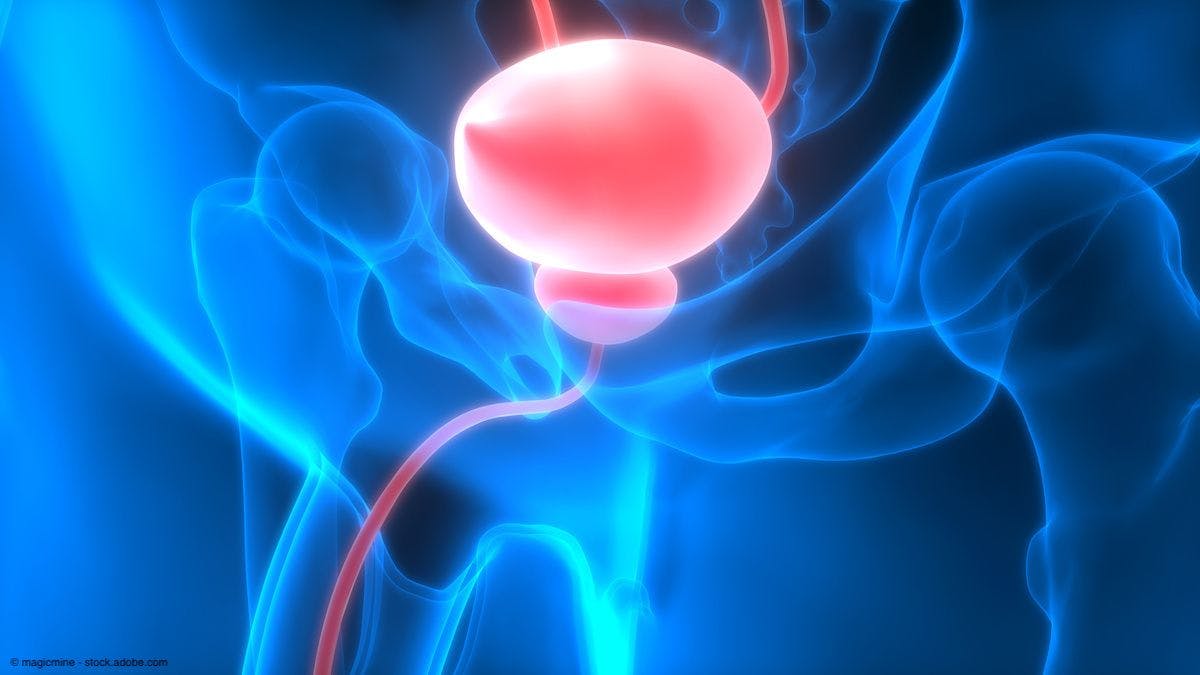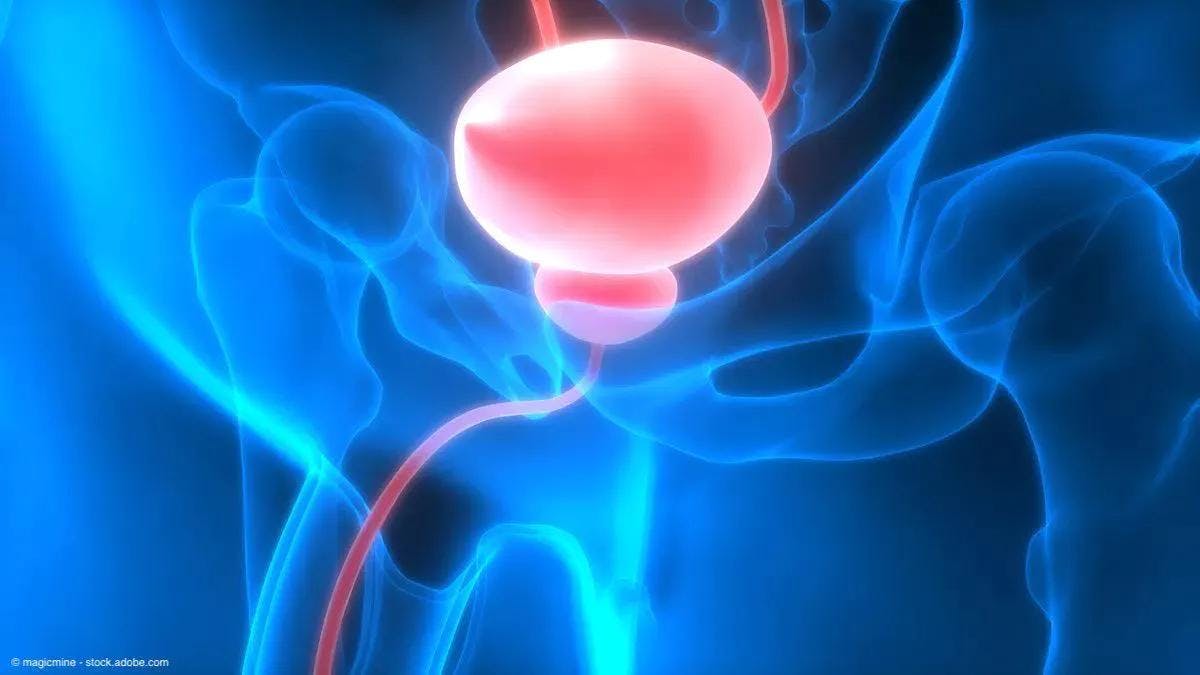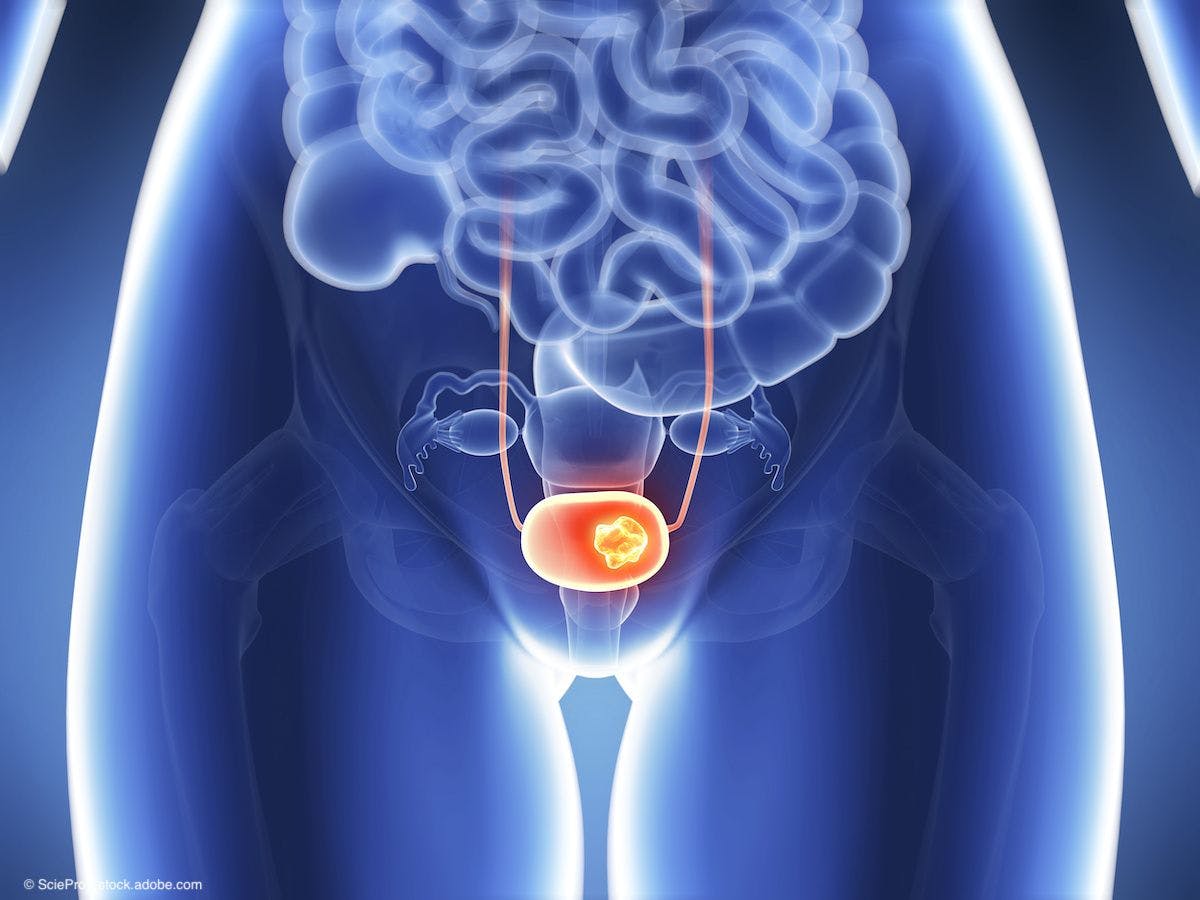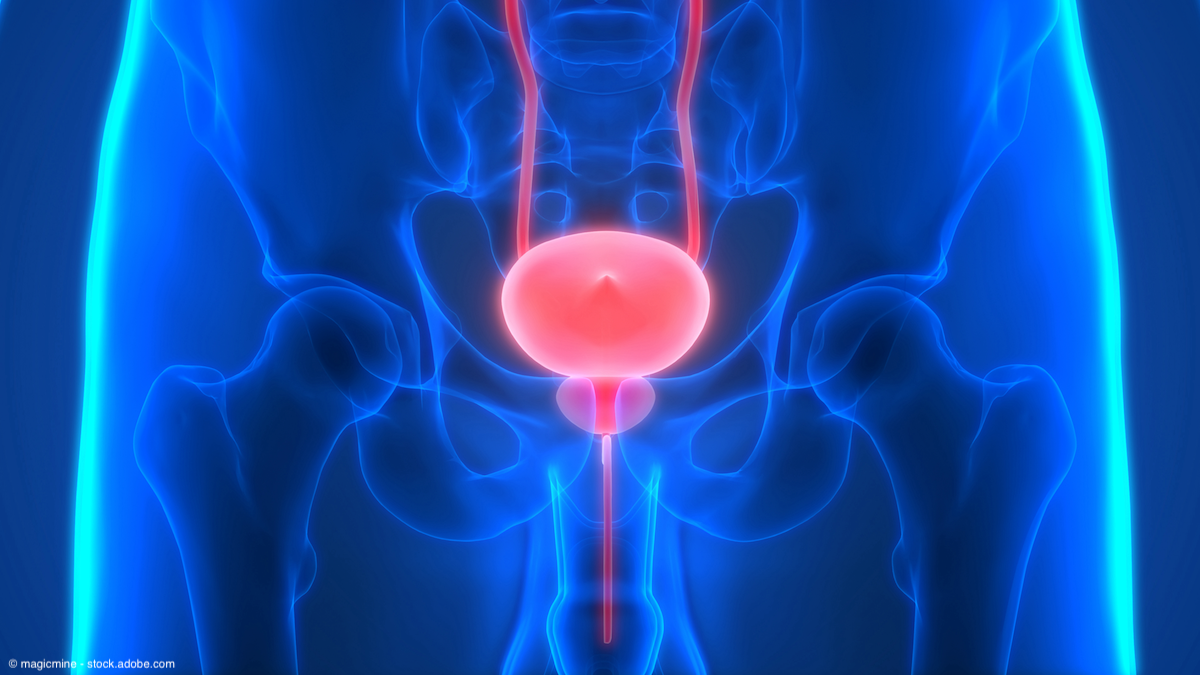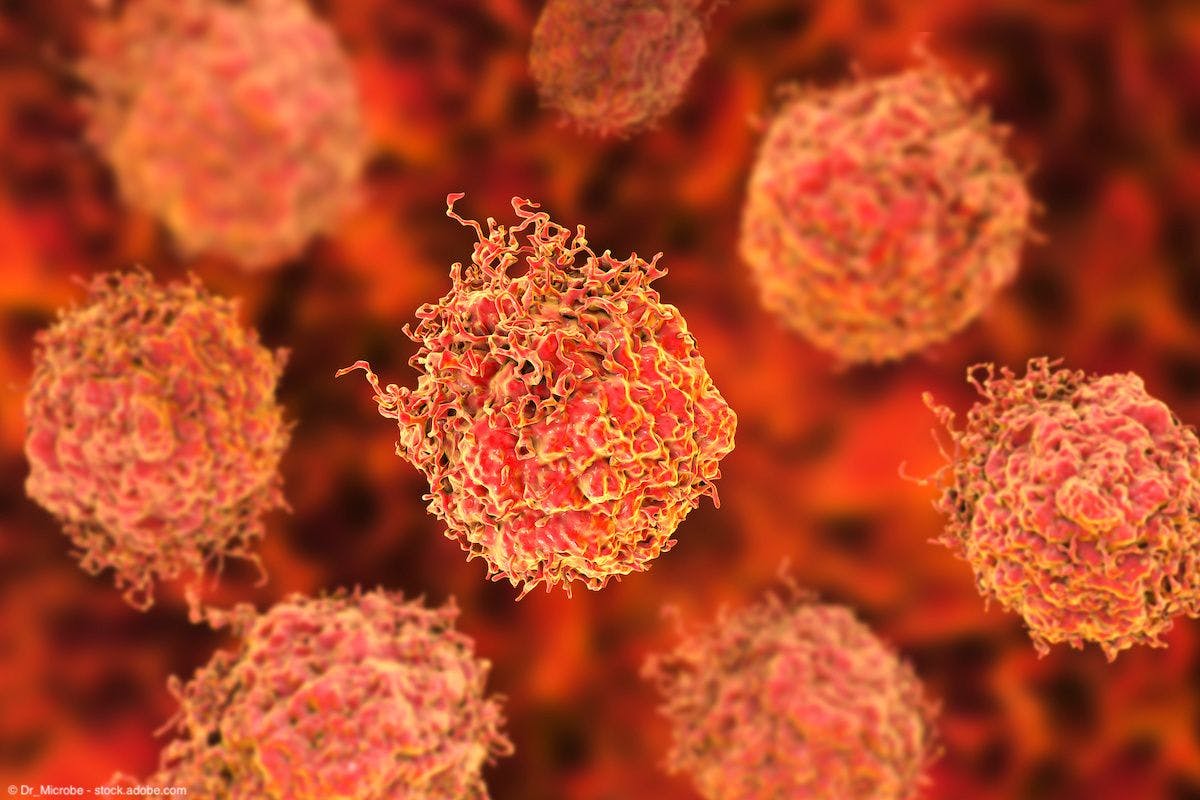Feature
Article
Urology Times Journal
TAR-200 may bolster NMIBC treatment options
Author(s):
In this interview, Mark D. Tyson, MD, MPH, discusses TAR-200 and other novel investigational treatments for non–muscle-invasive bladder cancer.
Mark D. Tyson, MD, MPH

“I predict 2024 will be a banner year for progress in the management of [non–muscle-invasive bladder cancer (NMIBC)], and not only will we be moving the needle but also turning up the volume in this historically quiet space,” Urology Times Co–Editor in Chief Michael S. Cookson, MD, MMHC, FACS, wrote in a recent editorial. Among the treatments discussed in his article is TAR-200, an intravesical delivery system that works by providing sustained low doses of localized gemcitabine via insertion into the bladder. The FDA recently granted TAR-200 a breakthrough therapy designation for the treatment of patients with BCG-unresponsive high-risk NMIBC who are ineligible for or elected not to undergo radical cystectomy. In this interview, Mark D. Tyson, MD, MPH, discusses TAR-200 and other novel investigational treatments for NMIBC. He also gives an overview of the SunRISe-3 trial (NCT05714202) of TAR-200. Tyson is an associate professor of urology at Mayo Clinic in Phoenix, Arizona.
Disclosure: Tyson is a legacy TAR-200 investigator and an investigator for SunRISe-3. His institution receives funding for this research, but Tyson himself is not an investor or consultant for Janssen.
Could you discuss the current standard of care for both BCG-naive NMIBC and BCG-unresponsive high-risk NMIBC?
The standard of care for BCG-naive non–muscle-invasive bladder cancer is in the name. It’s BCG, generally, for high-risk non–muscle-invasive disease. That would include most high-grade Ta disease, certainly CIS [carcinoma in situ], and most T1 [disease]. It’s not just BCG induction, which is once a week for 6 weeks, but it’s also BCG maintenance. Using the SWOG 8507 trial [criteria], 3 years of maintenance is the schedule that most adhere to. It’s 3 weekly instillations at 3 months, 6 months, and then every 6 months up to 36 months. Most patients don’t get through that, though. In the SWOG 8507 trial [findings], only [approximately] 16% finished that; there was a lot of toxicity, and patients ended up quitting early due to recurrences or toxicity. So there is a push to either reduce the dose given or the number of maintenance course[s], especially for high-grade intermediate disease. EORTC-30962 [NCT00002990] demonstrated that most patients [with] high-grade Ta [disease] [recurrence score of less than 9 or a progression score of less than 6] could get away with just 1 year of maintenance.
For intermediate risk, it’s a little more nuanced. For low-grade histology, either observation or adjuvant intravesical chemotherapy is probably most appropriate. I tend to prefer gemcitabine if I’m going to do something, but for many of these patients, I try to see what their natural history is, especially if they’re older and have comorbidities.
For BCG-unresponsive disease, we should start by reminding the audience of the current definition. The old terminology of refractory, relapsing, and recurring has gone away in lieu of the FDA definition, which is essentially anybody who’s [experienced recurrence] with high-grade T1 [disease] after an initial induction course or anybody who’s [experienced recurrence] with papillary Ta disease within 6 months of adequate BCG, which is defined as an induction course, at least 5 of 6 treatments, followed by 2 more doses either in the context of a maintenance course or a second induction course. Recurrent CIS within 12 months of adequate BCG is also qualifying. For BCG-unresponsive NMIBC, the AUA [American Urological Association] guidelines give the strongest recommendation for radical cystectomy, especially [for] those with T1 disease or variant histology or patients who have evidence of lymphovascular invasion or high-volume disease that’s unresectable and/or [involves] the prostatic urethra or upper tract. But many of us question the utility of cystectomy in somebody who has a small volume of CIS in the bladder that you can only identify because of a positive cytology [result] and use of blue light [cystoscopy]. Does this patient need a cystectomy for BCG-unresponsive CIS? That’s where maybe some of the second-line therapies come into play.
Pembrolizumab [Keytruda] is one. It has a low complete response rate at [1] year and a risk of autoimmune-mediated systemic adverse effects, so I am a little hesitant to pivot straight to this after [patients become] unresponsive. Nadofaragene firadenovec [Adstiladrin] is another; Nadofaragene firadenovec is the nonreplicating adenovirus that delivers interferon to the bladder epithelium. It’s associated with a 24% chance of complete response at 1 year, but it has a favorable [adverse event] profile, and it’s logistically convenient for patients—once every 90 days. So for patients who travel and so forth, it makes it easy for them. Another option is Gem-Doce, an intravesical therapy approach that sequences gemcitabine instillation followed by docetaxel. The data supporting this approach are retrospective but appear encouraging. Gemcitabine monotherapy is reasonable as well, often forgotten about given the enthusiasm for Gem-Doce. But single-agent gemcitabine showed reasonably good activity, at least by our current standards, in SWOG 0353 [trial findings]. Valrubicin is also available, but low efficacy limits its utility. And of course, there are clinical trials, which many patients opt to participate in prior to undergoing a cystectomy.
Could you discuss the technology and delivery system behind TAR-200?
The TAR-200 device is an interesting platform technology. It’s a silicone tube that has 2 lumens. One lumen is a nitinol wire that has been preformed to form the pretzel shape. The other lumen consists of beads that are coated in gemcitabine and urea, and it basically forms a simple osmotic gradient that leads to the controlled release of gemcitabine in the bladder over the course of a few days or maybe even a week, essentially leading to longer dwell time. I don’t want to speak for the engineers at Janssen, but presumably, one could put anything in that device, and they’ve already done that with erdafitinib [Balversa] in TAR-210. So this can have both cancer and noncancer applications. That’s what makes this an exciting technology in my mind.
Please provide an overview of the SunRISe-3 study.
SunRISe-3 is a randomized phase 3 study comparing TAR-200 monotherapy induction and maintenance vs TAR-200 plus cetrelimabinduction and maintenance vs BCG according to the SWOG 8507 protocol. The BCG is a Danish strain, and the third year, is optional for patients or at the investigator’s discretion. The study is trying to understand whether the TAR-200 monotherapy arm or the TAR-200 combination therapy arm with cetrelimab is better than BCG. [It includes approximately] 1000 patients and is enrolling very quickly due to its apparent popularity among patients. In fact, I suspect that enrollment will be concluded sometime over the next couple of months.
We don’t have any results for SunRISe-3 yet, but if we are to extrapolate a little from the results of the legacy TAR-200 studies, which showed activity in the muscle-invasive spaces and now [findings from] SunRISe-1 [NCT04640623], which were presented at ESMO [European Society for Medical Oncology Congress 2023 in Madrid, Spain], I expect this to have some activity in the BCG-naive space.
The primary end point is event-free survival, which is, in this case, defined as high-grade recurrence, high-grade Ta CIS, high-grade T1 [disease]. There are a number of secondary end points, including complete response [CR] for CIS, and they do allow reinduction for CIS if a complete response is not initially achieved. [My experience with] the [adverse events] and tolerability of this…is that it is well tolerated.
In terms of next steps for TAR-200, we anticipate the final results of SunRISe-1. TAR-200 has already received the fast-track and breakthrough designations from the FDA for BCG-unresponsive disease. I fully expect SunRISe-3 to finish up accrual later this year, and we should begin to see some data hopefully later this year on an interim basis or early next year.
If approved, how would TAR-200 change the treatment landscape for NMIBC?
Well, it becomes one of many other good options. There are a number of things that are approved and/or that we use for BCG-unresponsive disease. This would potentially enter that same space and maybe give us something else to consider. For example, gemcitabine (either as monotherpay or incombindaiton with docetaxe), Pembrolizumab, adstilidrin, and valrubicin are all used in this setting . Gem-Doce is a cheap option and is well tolerated, but we don’t know how it works relative to some of the other drugs, although I will say it does show promising response rates in [findings from] the retrospective studies published so far. But KEYNOTE-057 [findings] showed that toxicity for pembrolizumab was higher than we would like for clinically localized disease. Nadofaragene firadenovec is only going to be successful in 1 of every 4 at [1] year; there’s still a lot of unmet need here.
Enter TAR-200, which at ESMO, showed a CR rate of more than 75% in the unresponsive space. This becomes yet another option for patients to consider and choose from. A lot of this is going to be coming down to toxicity and to some degree efficacy and to a large degree convenience and tolerability. In terms of BCG-naive disease, that’s where it might have the biggest impact in the short term, because a lot of practices struggle with sourcing BCG. If TAR-200 monotherapy ends up being equivalent or superior to BCG in SunRISe-3 [findings], that could even supplant BCG as the first-line drug. I’m not sure that it’s going to be superior to BCG; we will have to see.
What’s on the horizon in the NMIBC space?
There are a lot of [developments]. ImmunityBio’s PDUFA [Prescription Drug User Fee Act] date for N-803 is in April, so we’ll see what the FDA has to say about that. That showed good CR rates in unresponsive patients. I think 45% of patients had a CR that was durable at [1] year. They have to source BCG because combination therapy is required, but it’s the most imminent thing that’s on the horizon. CG Oncology’s CG0070, or cretostimogene grenadenorepvec, has also received fast-track and breakthrough designations from the FDA. Interim data from BOND-003 [NCT04452591] were presented at SUO [2023 Society of Urologic Oncology Annual Meeting in Chicago, Illinois]. It’s a conditionally replicating oncolytic adenovirus that selectively replicates in and kills RB [retinoblastoma] pathway–deficient tumor cells. It’s a very promising technology that is going to change the landscape when it hits the ground. There’s also TAR-210; [it’s] convenient, with once-every-90-days dosing, and FGFR alterations appear prevalent in non–muscle-invasive bladder cancer, so erdafitinib is a reasonable choice. There is also TARA-002, a Streptococcus pyogenes–based drug that is in clinical testing right now. There is enGene’s EG-70, which is a nonviral gene therapy that is based on RIG-I and IL-12. There are also some combination therapies, including pembrolizumab plus cretostimogene grenadenorepvec, which showed good response rates at the AUA [Annual Meeting in Chicago, Illinois, in the] past year. There are a lot of exciting newapproaches that are on the horizon.
How do you think this delivery system could be used in the future?
It’s going to be used to treat BCG-unresponsive non–muscle-invasive bladder cancer based on what’s been presented so far. I think it’ll likely be used for BCG-naive disease as well. Practices that don’t have BCG might gravitate toward this, so I anticipate that it might fill an unmet need there as well.





